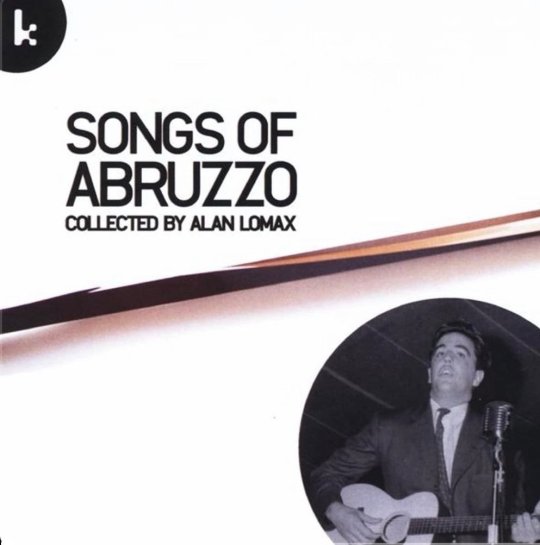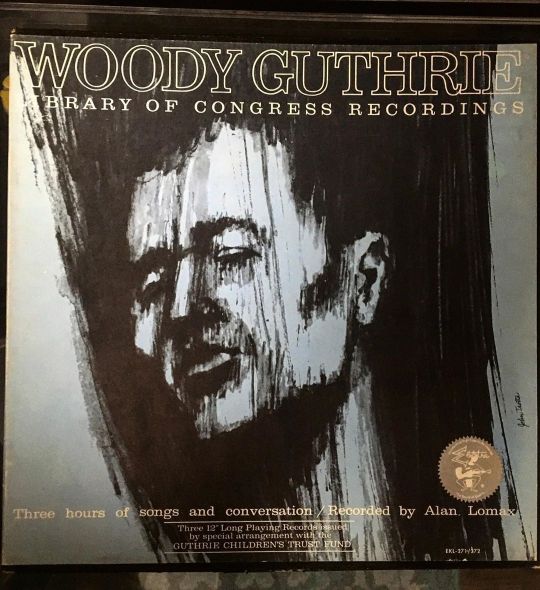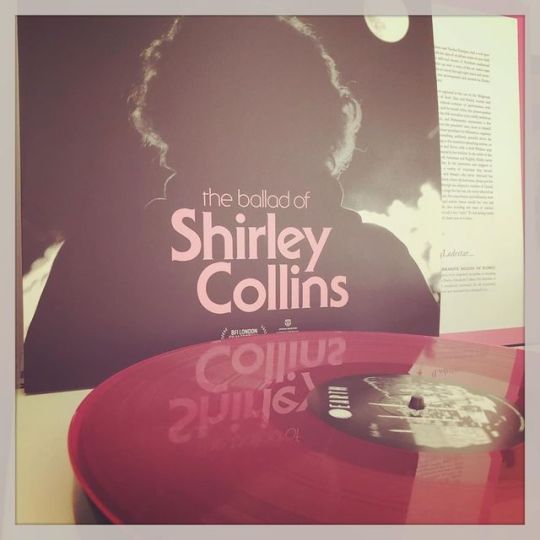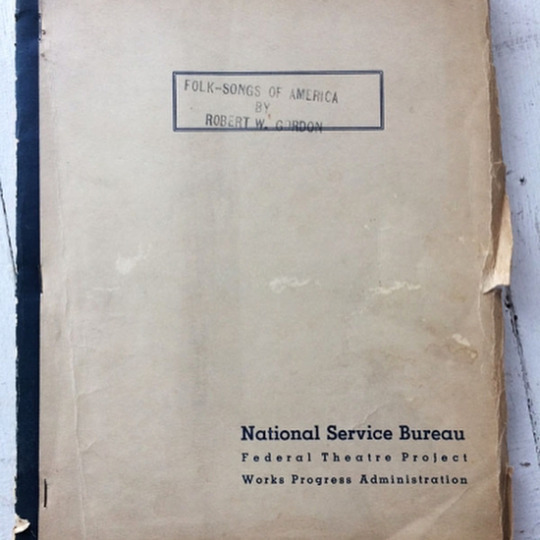#alanlomax
Photo

#alanlomax what an #amazing #record #incredible #songs #abruzzo #italy #screenwriting #writing #tvwriting #amwriting #film #television #nycgratitude. (at Manhattan, New York) https://www.instagram.com/p/CgsGOUev3uk/?igshid=NGJjMDIxMWI=
#alanlomax#amazing#record#incredible#songs#abruzzo#italy#screenwriting#writing#tvwriting#amwriting#film#television#nycgratitude
0 notes
Photo

Tony Palmer,
All You Need Is Love: The Story Of Popular Music
(born 29 August 1941)
#tonypalmer#jazz#blues#music#quotes#encyclopedia#bluesstyles#worksongs#sidhemphill#ervinwebb#edyoung#milespratcher#fredmcdowell#theearlyyears#alanlomax#africanamerican#south#fieldholders#deltablues#spirituals#prisonrecordings#secular#rhythm#labour#creativity#expression#allyouneedislove#thestoryofpopularmusic#gospel#chetwilliamson
1 note
·
View note
Photo

Record 2010. #Moby #Play Original 1999 pressing, this record was huge at the turn of the 20th to 21st century, and was heard almost everywhere, in particular due to it's licensing to multiple films, television shows and commercials. So while this album can potentially feel overplayed, it still does not cease to deliver, in particular with it's use of American folk and blues music samples direct from #AlanLomax field recordings, mixing the sounds of the common man from the 40's and 50's with modern breakbeats and electronic music. The chillout tracks on this record are also particularly beautiful. #vinyl #records #nowspinning #vinyljunkie #recordcollection #vinyligclub https://www.instagram.com/p/B5zVUl7p6uV/?igshid=wjotlwl68i8z
2 notes
·
View notes
Photo

It’s Day 5 of the #vinylbookchallenge by @deepindigo114_vinyl and @puttherecordon: Harry Potter - Album To Share With Your Friends. Richard Dyer-Bennett - Twentieth Century Minstrel (Decca, 1949) The convergence of the Berkshires and the world of psychology served to bring together my parents and Dick Dyer-Bennett and his wife, Mel, who was a dancer and therapist. She worked at Austen Riggs, where my father (a psychiatrist) sometimes consulted. I just thought they were more of my parents quirky friends and had no idea that Dick was a legend in the folk revival of the 50’s, bringing many ancient songs back into the repertoire. Now I share it with you, my friends! #novembervinylchallenge #vinylcommunity #vinyl #vinylcollection #vinylgram #vinylgeek #vinylcollector #folkmusic #richarddyerbennett @deccarecords #alanlomax @alanlomaxarchive https://www.instagram.com/p/CHOlwqjAqhS/?igshid=1870z118hmgeq
#vinylbookchallenge#novembervinylchallenge#vinylcommunity#vinyl#vinylcollection#vinylgram#vinylgeek#vinylcollector#folkmusic#richarddyerbennett#alanlomax
0 notes
Photo

Saturday Record Post-Woody Guthrie Library of Congress Recordings-Original Elektra pressing-3 discs with booklet ‼️ #33rpm #🎼 😎🪕#lettherebeneon #vinyllove #vinyljunkie #vinyloftheday #vinylporn #vinylcommunity #nowplaying #sounds #music #woodyguthrie #alanlomax #libraryofcongress #elektrarecords @woodyguthriecenter @elektrarecords @librarycongress #okie https://www.instagram.com/p/B7dxVPIJNI6/?igshid=1171i5l9ft266
#33rpm#🎼#lettherebeneon#vinyllove#vinyljunkie#vinyloftheday#vinylporn#vinylcommunity#nowplaying#sounds#music#woodyguthrie#alanlomax#libraryofcongress#elektrarecords#okie
0 notes
Video
Lomax Monday Madness. 🎧 #music #musica #techno #house #chicagomusic #audiovisual #wormhole #sound #chicago #chi #chitown #alanlomax #sampling #blackmusic #love #art #rickdrako (at North Center, Chicago)
#wormhole#art#blackmusic#chicago#techno#house#rickdrako#sound#chitown#chicagomusic#alanlomax#love#chi#audiovisual#musica#music#sampling
1 note
·
View note
Photo

Woody Guthrie – Library Of Congress Recordings (Elektra – EKL-271/272, 1964) I'm not a big fan of folk music, but Woody transcends genre; popular music would be something very different without the reality that Woody injected into his craft. This box is as mint as they come and I'm glad to have found it in today's travels, I look forward to digging into this 3-disc set. . . . . . . . . #music #record #records #recordcollection #recordcollector #vfrecordcollections #recordcollecting #vinyl #vinyljunkie #vinylrecords #vinylaficionado #vinylcollection #vinylcollectionpost #vinylcollector #vinylcommunity #albumcover #albumcoverart #instavinyl #cratedigger #nowspinning #followme #woodyguthrie #elektra #jacholzman #libraryofcongress #alanlomax #folk #folkmusic #sketch #photography
#vinylaficionado#folkmusic#vinylcollector#records#albumcoverart#vinylcommunity#photography#vinylrecords#record#jacholzman#vinylcollection#vfrecordcollections#recordcollecting#libraryofcongress#music#sketch#nowspinning#vinyl#followme#alanlomax#woodyguthrie#vinyljunkie#recordcollector#folk#cratedigger#albumcover#instavinyl#vinylcollectionpost#elektra#recordcollection
5 notes
·
View notes
Photo

The Ballad of Shirley Collins • • • #ShirleyCollins #TheBalladOfShirleyColins #EarthRecords #2018 #AlanLomax #Soundtrack #QAcoustics #QA3010 #Rega #RP1 #Vinyl #Records #NowPlaying #VinylCollection #RecordCollector #VinylJunkie #LP #33rpm #PinkVinyl https://www.instagram.com/p/By7ZLIGJzhX/?igshid=1uetcbpmsxqhg
#shirleycollins#theballadofshirleycolins#earthrecords#2018#alanlomax#soundtrack#qacoustics#qa3010#rega#rp1#vinyl#records#nowplaying#vinylcollection#recordcollector#vinyljunkie#lp#33rpm#pinkvinyl
0 notes
Link
Some pretty cool shit, check it out here: http://theglobaljukebox.org/
2 notes
·
View notes
Photo

Folk Songs Of America Robert Winslow Gordon Publ by National Service Bureau Federal Theatre Project published 1938 Just posted to the Book section of sturgisantiques.com #sturgisantiques #wpa #folkarchives #bookcollection #robertgordon #alanlomax #forsale (at Sturgis Antiques & Collectables)
0 notes
Photo

#albumoftheday #TexasNegroPrisoners #AlanLomax Prison Song vol 1 Murderous Home. Alan Lomax was a Austin Tx born ethnomusicologist. He traveled around the U.S. and later Europe recording folk songs and local music. Thanks to his efforts these songs would probably have been lost but are now preserved. (at Golconda, Nevada)
0 notes
Text
REVIEW: "Songs of Hard Times: Up, Over & Through (1936-1982) – Various Artists" from the Alan Lomax Archive is Musical History
REVIEW: "Songs of Hard Times: Up, Over & Through (1936-1982) – Various Artists" from the Alan Lomax Archive is Musical History @alanlomax #americanamusic @lomaxarchive
Songs of Hard Times: Up, Over & Through (1936-1982) – Various Artists – Alan Lomax Archive
While the majority of these 20-tracks are relatively short they’re a small piece of musical history captured by the field recording work of Alan Lomax. There are folk songs, race music, work songs, hollers, blues & hillbilly. Sung in Spanish, Italian, Scottish & French.
But it’s the expressive human voice…
View On WordPress
0 notes
Text
Blind Gary Davis
Reverend Gary Davis was born on April 30, 1896 in Laurens, South Carolina. He was the only child who survived to adulthood in his family, and he became blind when he was an infant. Davis was primarily cared for by his paternal grandmother, and during his early years, he picked the guitar and became an expert at it as well as picking up the banjo and the harmonica. In the 1920′s, Gary left home to go to Durham, North Carolina where he taught and collaborated with many African American musicians. After being introduced to the American Record Company, “Blind Gary Davis” was recording many songs that had a gospel influence, since he became an ordained minister in 1937. As the blues scene declined in Durham, he moved to New York in the 1940′s. In the 1960′s, there was a revival in folk music, and Davis became interested in performing and recording music again. Gary Davis influenced the likes of Blind Boy Fuller, Dave Van Ronk, and Bob Dylan. He passed away due to a heart attack on May 5, 1972.
https://www.youtube.com/watch?v=BTP1q8i6-9Q
“I'm Throwin' Up My Hands“ was recorded in 1935. This blues guitar song has largely downward contours with a very narrow range of notes, jumping up and down from two notes most of the time. The only instrument in this song is guitar, but Davis has a unique style to his guitar playing. He can easily finger pick extremely difficult rhythms and notes, which leads to a complex piece. Lyrically, there isn’t that much to the song; the song focuses much more on the skillful guitar playing. However, Davis is discussing how his girlfriend left him as well as his lack of home and friends. There are references to God, as he repeats, “Lord, Lord” in the second verse; this is telling of Davis’s style since he was a Baptist minister.
https://www.youtube.com/watch?v=jcL-VvWqNLE
“Cross and Evil Woman Blues” was recorded in 1935 as well. Vocally, Davis sounds as if he is wailing and whining while singing. His tone is definitely unique, and he still uses few notes to convey his feelings. Instrumentally, the guitar in the beginning of the sound almost sounds like an introduction to a rock song made in the 1950′s, which is extremely interesting and telling of the influence of blues on rock and roll. Davis’s expert fingerpicking is also very prevalent in this song. Lyrically, this song discusses how a woman treats Davis very poorly when she wakes up and when she’s just living her life. “Lord” is referenced again in this song as well.
Sources:
Harold, Ellen, and Peter Stone. “Reverend Gary Davis.” Cultural Equity, www.culturalequity.org/alanlomax/ce_alanlomax_profile_reverend_gary_davis.php. Accessed 21 Sept. 2017.
“Reverend Gary Davis.” Wikipedia, Wikimedia Foundation, 1 Sept. 2017, en.wikipedia.org/wiki/Reverend_Gary_Davis. Accessed 21 Sept. 2017.
0 notes
Text
This World Is Goin' to Destruction (1942) - James Moore and friendd - #AlanLomax
youtube
This World Is Goin' to Destruction (1942) - James Moore and friendd - #AlanLomax
Composed by Moore and recorded by Alan Lomax at the home of Dave Ro[w]land, Sadie Beck's plantation, Arkansas, July 17, 1942. [6606B1]
0 notes
Photo

HISTORIC MUSIC FROM HAITI RECORDED AND ARCHIVED BY ALAN LOMAX (RIP) IN THE 1930's Alan Lomax in Haiti - Commercial (Short Version) - YouTube https://www.youtube.com/watch?v=qQ4aPQ2bxzs ALAN LOMAX IN HAITI http://www.culturalequity.org/features/haiti/ce_features_lomaxinhaiti-essay.php " When 21-year-old Alan Lomax dragged 155 pounds of luggage and recording equipment into the heat and humanity of Port-au-Prince's dockside, he entered a crucible. In the Christmas season of 1936, #Haiti was re-forging a national identity after a 15-year U.S. occupation. The island nation was discovering the roots of its rural culture in Africa, struggling to reconcile the class and race issues arising from a mixed #French, #Spanish and #African #heritage, and the cosmopolitan urban culture and #folk traditions of the rural poor. Lomax, too, was coming of age in his first solo venture in ethnography, while wrestling with emotional uncertainty, romantic longing, technical challenges, sickness, and financial woes. On November 17, Harte Recordings will release Alan Lomax in Haiti, a 10-CD audio and video box set that reveals for the first time the musical and cultural fruits of that national and personal struggle. Lomax entered a society stressed by poverty and occupation. The United States took control of Haiti in 1915 to patrol sea-lanes to the Panama Canal on the eve of WWI and to preserve order for the sugar companies. In 1936, the Marines had withdrawn just two years before, leaving behind a fragile representative government. The new independence also stimulated interest in folkloric traditions, as expressed in the indigène movement and the work of Haitian classical composer Ludovic Lamothe (his only recorded performances of his own work are on the set's first disc). Though officially outlawed, #Voudou music and ceremonies attracted sensationalists in the late 1920s and early 30s, such as Hollywood zombie-movie maker William Seabrook � which provoked an understandable mistrust of the ethnographers who followed. Haiti in the #1930s was a magnet for scholars and ethnographers such as Lomax who were pursuing the trail of African-American culture to its sources in Africa. The lighter-skinned, urban upper classes identified with French culture and Catholicism, while the separateness of the undeveloped rural countryside that was home to Haiti's masses allowed African expressions to flourish and hybridize with European elements. That relatively untouched terrain brought anthropologist Melville Herskovits, dancer and writer Katherine Dunham, author (and Lomax collaborator) Zora Neale Hurston , and several other researchers, including George Simpson and Harold Courlander, to Haiti during this period. Both in the United States and abroad, the late 1930s ushered in a new era of exploration of indigenous culture, folklore and the expressions of the rural poor. The shared experience of the global Depression created fellow feeling and interest in the lives and accomplishments of ordinary people. In the U.S., these realities were being documented by artists and writers employed by U.S. Federal programs. Previous expeditions to Haiti resulted in rich descriptions; Lomax brought back sounds and images &mdash allowing them speak to us directly. Lomax came to Haiti under the auspices of the Music Division of the #Library of #Congress. The young man was already well-traveled and experienced, having begun, while still a teenager, to assist his father, John Avery Lomax, in a major effort to record African-American folk music in the U.S. Later he collaborating collaborated with Zora Neale Hurston and NYU professor Mary Elizabeth Barnicle on field expeditions to the Georgia Sea Islands and migrant labor camps in Florida. Those trips pointed Lomax to the Bahamas in 1935 and then to Haiti, encouraged by Hurston, and funded, if minimally, by the Library. As the extensive and illuminating books included in the box set make clear, Lomax was confronted with scenes surpassing any he'd witnessed in even the most poverty-stricken districts of his own country. Lomax's Haiti diaries, edited by Ellen Harold, contain many evocative passages: “This morning on the mountain I walked through the whole of the lives of millions of people on the earth. A woman in a blue dress and holding her baby sat on the hard, clean, white clay of her front yard, while her man sat at the corner of their one-room hut, made of the wood, the straw, the palm leaves of that same mountain, leaned and smoked his pipe and did not look at the woman but at the fat nanny goat baaing around the corner. Down the street a little fox-terrier puppy say and shivered in the sun, ill with the disease of hunger; and all the dogs here are like that, thin and whining and shivering. I have the feeling that they and their masters mutually hate each other; they are competitors for the food supply.” Lomax complained little to his diary, reserving his energies for detailed descriptions of what he saw, but he let us glimpse his troubles: the obstacles thrown up by the Haitian bureaucracy and the near-constant requests for payment against his almost total lack of means; the lack of discs for recording; the technical limitations of his equipment (this was the last time he would use the aluminum disc-cutting recorders); debilitating fevers and dysentery resulting from malaria. And there was the anguish of separation from his young fianc�e, Elizabeth Harold &mdash resolved by an elopement and joyous reunion in Haiti, where they married. In spite of the challenges, Lomax managed to produce 1,500 recordings (fifty hours of sound) and six films, all of which were deposited in the Library of Congress. There they remained for seventy years, until a project begun by the Association for Cultural Equity/Alan Lomax Archive in the late 1990s resulted in preservation work by the Library's American Folklife Center and The Magic Shop in New York. The aluminum discs were transferred at the Library's Sound Lab in March, 2000. The medium was not ideal, as Matt Barton, the Library's curator of sound describes: “The twelve-inch aluminum discs they used for most of these recordings could only hold about five minutes of sound comfortably, but often, they simply had to hold more. On many discs, Brad and I saw that they had allowed the recording head to keep tracking to within barely an inch of the hole in the center of the disc. This reduced the fidelity and created untold technical headaches more than sixty years after the recordings were made, but in this way, a few seconds, perhaps even a full minute more of priceless documentary recording was accomplished.” The transferred files arrived at the Magic Shop in 2006, where Steve Rosenthal and Warren Russell-Smith applied digital technology to tease out the sound from the ambient noise and what Russell-Smith calls “the coughing and wheezing of Alan Lomax's 1930s recording equipment.” The entire collection was mastered using even more advanced tools in summer of 2009. In addition to producing the box set, ACE will repatriate the entire collection to Haiti, completely restored and remastered. There, we hope to work with local people and institutions to ensure that it is used and disseminated. As a result of its sponsorship by the Green Family Foundation of Miami, which is involved in humanitarian work in Haiti, the project has been made part of the Clinton Global Initiative in Haiti. The Haiti Project is the fruit of the hard work and commitment of our partners: Warren Russell-Smith and Steve Rosenthal at the Magic Shop; Jeff Greenberg and Beldock Levine and Hoffman; Dave Katznelson and Harte Recordings; Haiti scholars Gage Averill and Louis Carl St. Jean; Kimberly Green and Anthony Colon of the Green Family Foundation; and the American Folklife Center of the Library of Congress." READ MORE: http://www.culturalequity.org/features/haiti/ce_features_lomaxinhaiti.php Alan Lomax Haiti Recordings "Listening" Event - YouTube http://bit.ly/1qHsm3f Gonaives - YouTube http://bit.ly/1qHsKyy https://www.youtube.com/watch?v=OfH9Y58OXPo Instrumental Merengue - https://www.youtube.com/watch?v=CsYDRpde1fw Merengue - https://www.youtube.com/watch?v=ACWQCgqKD40 Haiti's Hidden Treasures By WILL FRIEDWALD During that period, the 21-year-old scholar and historian captured roughly 50 hours of sound recordings that were then buried in a U.S. government vault for more than seven decades, never seeing the light of day. Until now. READ MORE: http://www.wsj.com/articles/SB10001424052748703837004575013090167372252 Alan Lomax in Haiti Box set http://www.amazon.com/Alan-Lomax-Haiti-Various-Artists/dp/B002FOQY7C The Recordings of Alan Lomax in Haiti in 1936-1937 - YouTube http://bit.ly/1qHqWFI Alan Lomax Obituary in Journal of American Folklore http://alanlomaxpathfinder.tumblr.com/post/61561435013/alan-lomax-obituary-in-journal-of-american Abrahams, R. D. (2004). OBITUARIES: Alan lomax (1915-2002). Journal of American Folklore, 117(463), 97. Retrieved from http://search.proquest.com/docview/198462015?accountid=14214 #HAITI☆#LEGENDS #AlanLomax
0 notes
